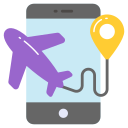
Chosen Theme: SEO Tips for Tourist Guide Websites
Welcome, travel storytellers and city experts! Today we dive into SEO Tips for Tourist Guide Websites—practical, human-first strategies to turn curious searches into unforgettable bookings. Stick around, leave your questions, and subscribe for fresh travel SEO insights every week.


Know Your Traveler: Intent-Driven Keyword Research
Identify queries like “best sunset viewpoint Lisbon,” “2-day Prague itinerary,” and “late-night food near Colosseum.” Align pages to moments: inspiration, planning, booking, and in-destination help, so your content anticipates needs the second they arise.
Know Your Traveler: Intent-Driven Keyword Research
Target detailed keywords such as “family-friendly Athens walking tour summer” or “wheelchair accessible Paris museums.” Layer in seasonal modifiers, local slang, and landmarks to capture qualified traffic with clear intent to book experiences.
On-Page Optimization That Converts
Use vivid verbs and specifics: “Hidden Rome at Dawn: Small-Group Walking Tour | 3 Hours, Local Guide.” Include a compelling benefit and a subtle call to action to boost click-through rates without sounding pushy.


On-Page Optimization That Converts
Structure content with H2/H3 headings that mirror traveler questions—meeting points, highlights, duration, and inclusions. Add trust signals like safety notes, group size clarity, and easy next steps to reduce hesitation and increase conversions.
Local SEO and Map Visibility
Google Business Profile Essentials
Choose accurate categories like “Tour operator” and “Tourist information center,” keep hours updated for seasons, add compelling photos, and answer common questions. Post timely updates about new routes or seasonal itineraries to stay visible and relevant.
NAP Consistency and Local Citations
Ensure your name, address, and phone number match across your website, maps, tourism boards, and directories. Consistency boosts trust, strengthens local relevance, and reduces confusion for both travelers and search algorithms.
Service Areas, Landmarks, and Multilingual Essentials
List neighborhoods, landmarks, and pick-up zones you serve. If you host international travelers, provide multilingual landing pages with hreflang tags to connect audiences with the right language and increase map pack eligibility.




Core Web Vitals as a Travel Essential
Optimize images with modern formats, lazy loading, and responsive sizing. Minify scripts, defer non-critical code, and reduce layout shifts so pages feel instant, trustworthy, and easy to book from any device.

Mobile UX that Removes Friction
Use large tap targets, clear pricing cues, and visible booking buttons. Provide fast access to meeting points, maps, and cancellation policies. Streamlined mobile journeys reduce drop‑offs and boost last‑minute, on-the-go conversions.

Crawlability, Sitemaps, and Hreflang
Maintain clean URL structures, submit XML sitemaps, and avoid orphan pages. Use hreflang correctly for multilingual content so the right language appears in the right market, minimizing duplicate perception and improving relevance.
Structured Data for Rich Results
01
Use the Right Schemas
Implement schema.org types like TouristAttraction, Tour, Event, Organization, and BreadcrumbList. Clear structured data improves context, supports rich results, and connects your expertise to the search features travelers rely on.
02
FAQ and How-To Opportunities
Add FAQ structured data to pages that answer common concerns—meeting points, refunds, accessibility—so travelers get confident quickly. Mark clear steps for meeting instructions or ticket pickup to reduce last-minute confusion.
03
Image and Location Markup
Provide ImageObject metadata and consistent geo details across pages. Reinforce where your experiences happen and what travelers see, increasing the chance of visual results that attract spontaneous, high-intent clicks.
Ethical Link Building through Local Partnerships
Collaborate with Cultural Institutions
Offer exclusive themed routes with museums or heritage sites and co-create guides. Many institutions link to partners on their websites, delivering authoritative, relevant backlinks that strengthen visibility and trust.
Destination PR with a Story
Pitch data-driven travel stories—“Off-peak Florence by Foot” or “Wheelchair-friendly Old Town routes.” Local media and travel blogs love helpful angles, and a single feature can spark organic links and brand awareness.
Fix Broken Travel Resources
Find dead links on local tourism pages and suggest your authoritative replacements—updated itineraries, safety checklists, or festival calendars. You help visitors while earning quality links that reflect your on-the-ground expertise.


A Lisbon guide reworked a generic “Tours” page into a hub with clear routes, seasonal itineraries, and strong internal links. Within eight weeks, organic bookings doubled as travelers finally found exactly what they were seeking.

Compressing images, cleaning scripts, and improving mobile buttons reduced bounce rates dramatically. The quicker page load helped last-minute travelers on data plans book sunrise tours without second thoughts or slowdowns.

Partnerships with local fado venues and a neighborhood association generated enduring, relevant links. Those citations reinforced local authority, lifted map rankings, and kept the guide visible for high-intent searches month after month.
